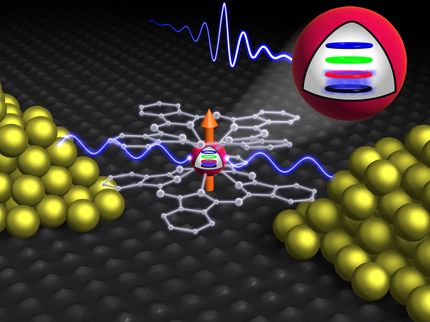Causing collapse
Weizmann Institute researchers suggest one can affect an atom's spin by adjusting the way it is measured
One of the most basic laws of quantum mechanics is that a system can be in more than one state – it can exist in multiple realities – at once. This phenomenon, known as the superposition principle, exists only so long as the system is not observed or measured in any way. As soon as such a system is measured, its superposition collapses into a single state. Thus, we, who are constantly observing and measuring, experience the world around us as existing in a single reality.
The principle of superposition was first demonstrated in 1922 by Otto Stern and Walther Gerlach, who observed the phenomenon in the spin of silver atoms. Spin is the intrinsic magnet in quantum particles, and when a particle's spin is in superposition, it points in more than one direction at the same time. (Instead of the north and south of magnets, these are referred to as up and down.) Dr. Roee Ozeri and research students Yinnon Glickman, Shlomi Kotler and Nitzan Akerman, of the Physics of Complex Systems Department studied how the spin of a single atom collapsed from superposition to one state when it was observed with light. They "measured" the atom by shining laser light on it. Just as our eyes observe the world by absorbing the photons – light particles – scattered in our direction by objects, the researchers observed the process of spin collapse in the atoms by measuring the scattered photons. In results that appeared recently in Science, they showed that the direction that a photon takes as it leaves the atom is the direction that the spin adopts when superposition collapses.
Next, the team measured the polarization of the emitted photon and found that the observed polarization determines the effect of measurement on the spin. This suggests that an observer can influence the collapse of superposition just by adjusting the orientation of his photon-polarization measurement apparatus.
The reason for this "action-at-a-distance" is that the spins of the measured atoms and the emitted photons were entangled. That is, even after they were separated, a measurement of one of them instantaneously affected the other.
The experiment is an important step in understanding the measurement process in quantum systems.
Most read news
Organizations
Other news from the department science

Get the chemical industry in your inbox
By submitting this form you agree that LUMITOS AG will send you the newsletter(s) selected above by email. Your data will not be passed on to third parties. Your data will be stored and processed in accordance with our data protection regulations. LUMITOS may contact you by email for the purpose of advertising or market and opinion surveys. You can revoke your consent at any time without giving reasons to LUMITOS AG, Ernst-Augustin-Str. 2, 12489 Berlin, Germany or by e-mail at revoke@lumitos.com with effect for the future. In addition, each email contains a link to unsubscribe from the corresponding newsletter.




























































